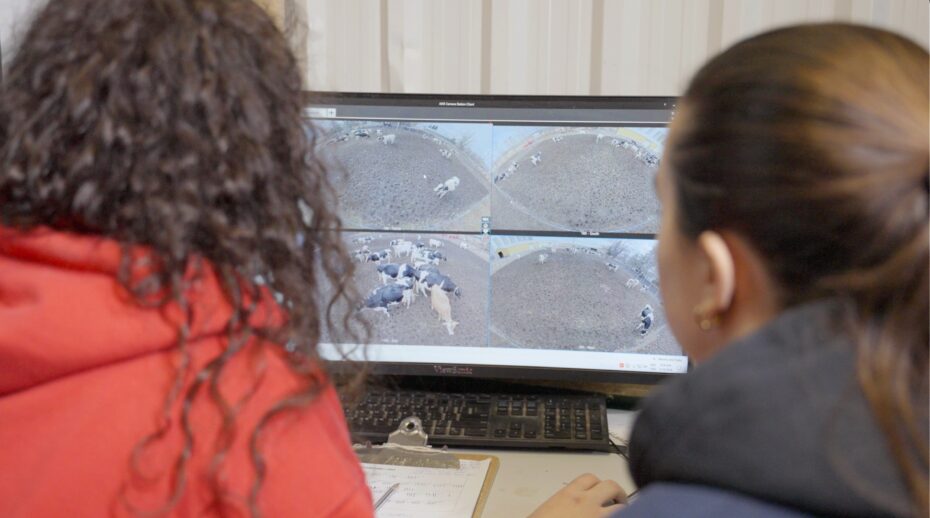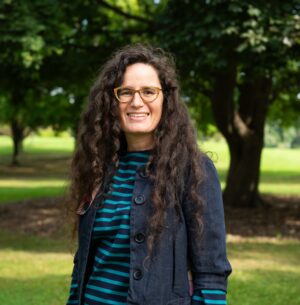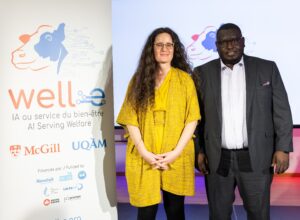Achi news desk-

Imagine cows roaming freely in a barn with cameras and sensors connected to artificial intelligence in a system that predicts their mood and lifespan. Implementing such a system is the mission of the new Chair for Research and Innovation in Animal Welfare and Artificial Intelligence (WELL-E), created jointly by McGill University and UQAM thanks to $5 million in funding over five years.
“It’s a living digital lab that will work with producers to give them new tools,” said Elsa Vasseur, Associate Professor in McGill University’s Department of Animal Science. She is the co-chair, who will receive technical and financial support from several partners, including Les Producteurs de lait du Québec (PLQ) and the Lactanet dairy herd improvement center, as well as the Novalait consortium of Quebec milk producers and processors. .
Happier, healthier cows, more profitable farms




It takes two years for cows to reach maturity and produce milk—or an average of three years in Canada—which gives farms very little time to turn a profit. The WELL-E Chair aims to make farmers’ lives simpler by improving the longevity of dairy herds and helping them identify the animals least susceptible to disease and injury.
“Producers need their cows to be productive, but also to be happy and healthy for as long as possible. All three are linked,” explains the animal welfare expert whose previous work has strongly influenced the 2023 overhaul of Canada’s dairy industry code of practice. The updated code recommends increasing opportunities for cattle to move through allow them to roam freely in areas set up as a cowshed, or in outdoor exercise areas.
The main aim of the new chair will be to combine remote sensing by cameras and sensors with megadata and artificial intelligence. The approach is unique as it brings Vasseur’s expertise in animal behavior and welfare assessment together with the expertise of her co-chair, Abdoulaye Baniré Diallo, a professor in UQAM’s computer science department who works on new artificial intelligence technologies.
Training the next generation of interdisciplinary experts
The aim of the project is to structure the collection, storage, transmission, analysis and presentation of data in the barn so that farmers can make use of it. “The idea is to detect early signs of physical and mental health that are not visible to the naked eye, but could be detrimental to the welfare and longevity of cattle, and help farmers anticipate any problems that may arise.”
This large-scale project will involve the input of approximately 50 graduate and undergraduate students from McGill and UQAM. “We will introduce future computer scientists to the realities of livestock farming, while our animal science students will be able to explore data management and digital agriculture. Indeed, we are training the next generation of interdisciplinary specialists.”
This chair also marks another first. In addition to contributions from Dairy Farmers of Canada and Lactanet, a Canada-wide network of expertise in milk recording and milk production, WELL-E receives support from Dairy Farmers of Ontario. “Ontario producers had never invested in a Quebec venture on this scale before,” said Vasseur. “We are positioning ourselves nationally and internationally. There aren’t many research projects with this scope.”
McGill has long been a center of dairy expertise




McGill University has always been committed to improving practices and products in the Quebec dairy industry. Its Macdonald campus in Sainte-Anne-de-Bellevue operates the last dairy farm on the island of Montreal and has won numerous awards of excellence. Since 1907, a wide range of research has been carried out here on subjects ranging from feed and nutrition to poultry biosecurity and rural engineering.
One McGill researcher in particular, Professor John E. Moxley, was instrumental in modernizing Quebec’s dairy industry. In 1966, he established a dairy herd analysis service which produced detailed reports on cow performance based on data collected on farms and computerized infrared milk analysis technology. It was a huge success, evolving into Valacta, a center of expertise in milk production with its headquarters in Sainte-Anne-de-Bellevue.
Valacta is now one of three founding partners of the Canadian Lactanet network that will supply data to the WELL-E Chair. Valacta has hundreds of employees across Quebec and the Atlantic provinces, including at its head office in Ste-Anne-de-Bellevue. “Valacta still exists, although we have adopted the Lactanet brand,” said Elsa Vasseur, who sits on Valacta’s board of directors as a representative of McGill University. “Valacta is self-funded and provides dairy expertise for all of Canada.”
Milk producers in Montérégie to join the project next year
The WELL-E Chair continues to bring in new players from the Quebec dairy industry. So far, only the dairy farm on the Macdonald Campus has been involved. In a few months, the chair will also include a second dairy in Ontario. In 2025, it will use the Université de Montréal campus network in Saint-Hyacinthe to increase operations by bringing in several hundred producers in the Montérégie region.
“We need to get the commercial farms involved as soon as possible, because we exist to make sure that information is transferred quickly between the university and the community. That’s our calling.”
Translated by Julie Barlow





Source link
Related

